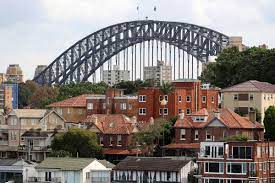Sydney and Melbourne Set to Lead Property Cost Tumble
As financing costs rise, costs are now down 3% in Sydney and 1.8% in Melbourne, with different capitals tipped to take action accordingly
Property cost falls in Sydney and Melbourne are picking up speed as getting costs rise, starting a precedent liable to be continued in other state capitals, as per industry experts CoreLogic.
Information taking in the greater part of June demonstrates home estimations in Sydney are down 3% from their top in February and are around 1.8% lower in Melbourne after a top in March, said Tim Lawless, CoreLogic’s pioneer and examination chief.
In June alone, costs in Sydney were down around 1.4% from May. “We’re seeing the pace of decrease in lodging values building up exceptionally clear speed,” Lawless said. The direction is as of now a lot more honed than in the past decrease in 2017.
“There’s still presumably one more possibly a year in front of us in this slump,” he said. Uncivilized anticipated the market was in the “genuinely beginning phases” of a decay, with the degree of falls contingent to some extent on how quickly the Reserve Bank lifts its loan fee to control expansion.
A scope of pointers highlight a cooling of the property market. Last week, practically 29% of properties booked available to be purchased in Sydney were removed from the market due to frail interest, the biggest extent since April 2020 when the main Covid wave was showing up, CoreLogic said.
What’s more, homes are taking more time to sell.
During the 2017-19 downturn, the typical house went from 24 days available to upwards of 69 at the cycle’s nadir.
Conversely, during their briefest chance to sell last October, the typical house was keep going just 20 days available. That has now ascended to 29 days.
“It’s a genuinely slow pattern upwards, but at the same time it’s an exceptionally clear pattern,” Lawless said.
“As homes take more time to sell, you see limiting rates begin to expand as the need might arise to haggle more. That will likewise be reflected in lower sell off leeway rates too.”
Postings in Sydney were likewise around 8% higher than they were a year prior.
Melbourne was on a comparative track, despite the fact that from a lower base than Sydney in light of the fact that the run-up in property costs was less extreme, Lawless said. Melbourne has had falling sale freedom rates and properties were taking more time to sell also.
The Victorian capital held just about 1000 sell-offs in the previous week. Starter information demonstrates simply more than 60% got a deal, the best extent in a month yet well short of the practically 75% leeway pace of this time last year, CoreLogic said.
Patterns were less clear in different capitals, to some extent since barters were commonly a less famous method for exchanging property. In Adelaide and Brisbane, around 10-15% of deals were by sell off, Lawless said.
Adelaide stays the most grounded property market among the capitals, with lodging values actually ascending at around 1% every month. Closeout leeway rates were likewise higher, with in excess of two out of each and every three homes selling.
Brisbane’s market has been more unpredictable, with freedom rates down to the high 40% territory, however returning to around 65% in the previous week. Homes are requiring 20 days on normal in confidential settlement deals, up from 16 days a year prior.
“Brisbane has a market that is still really hot however not scorching like it used to be, and Adelaide, I put it in a similar bushel,” Lawless said.
Perth, in the interim, may evade the pattern. The city, which had Australia’s most costly middle lodging in 2006, presently slacks any remaining capitals after costs started falling in mid-2014 as of recently.
“It’s truly reasonable market,” Lawless said. With a jobless rate underneath 3% and a still light wares driven economy, “Perth seems to be perhaps somewhat more protected from the slump”.
The possibility of lessening property costs across quite a bit of Australia most likely will not get a lot of help to those the rental market, Lawless said.
Rents are increasing at a yearly pace of 9% broadly, with opportunity rates commonly around 1% or close to record lows.
With global business sectors starting to resume, bringing more understudies and transients, Lawless expected to see extra rental interest streaming into Australia. “Possibly, we see tenants truly battling with rental reasonableness,” he said.
The reasonable outcome is that property financial backers will be charmed once again into the market throughout the following six to nine months as net rental yields return to additional run of the mill levels, Lawless anticipated. Their return might assist with tightening the fall in property costs.
Riley Gabb is a 35-year-old extra who enjoys spreading news on Facebook, watching television and podcasting. He is creative and entertaining, but can also be very unstable and a bit unintelligent.
He is addicted to video games, something which his friend Calvin Karan Johnston pointed out when he was 15. The problem intensified in 2002. Riley has lost two jobs as a result of his addiction, specifically: kitchen assistant and cleaner at a studio.
He is an Australian Jedi. He has a post-graduate degree in literature.




